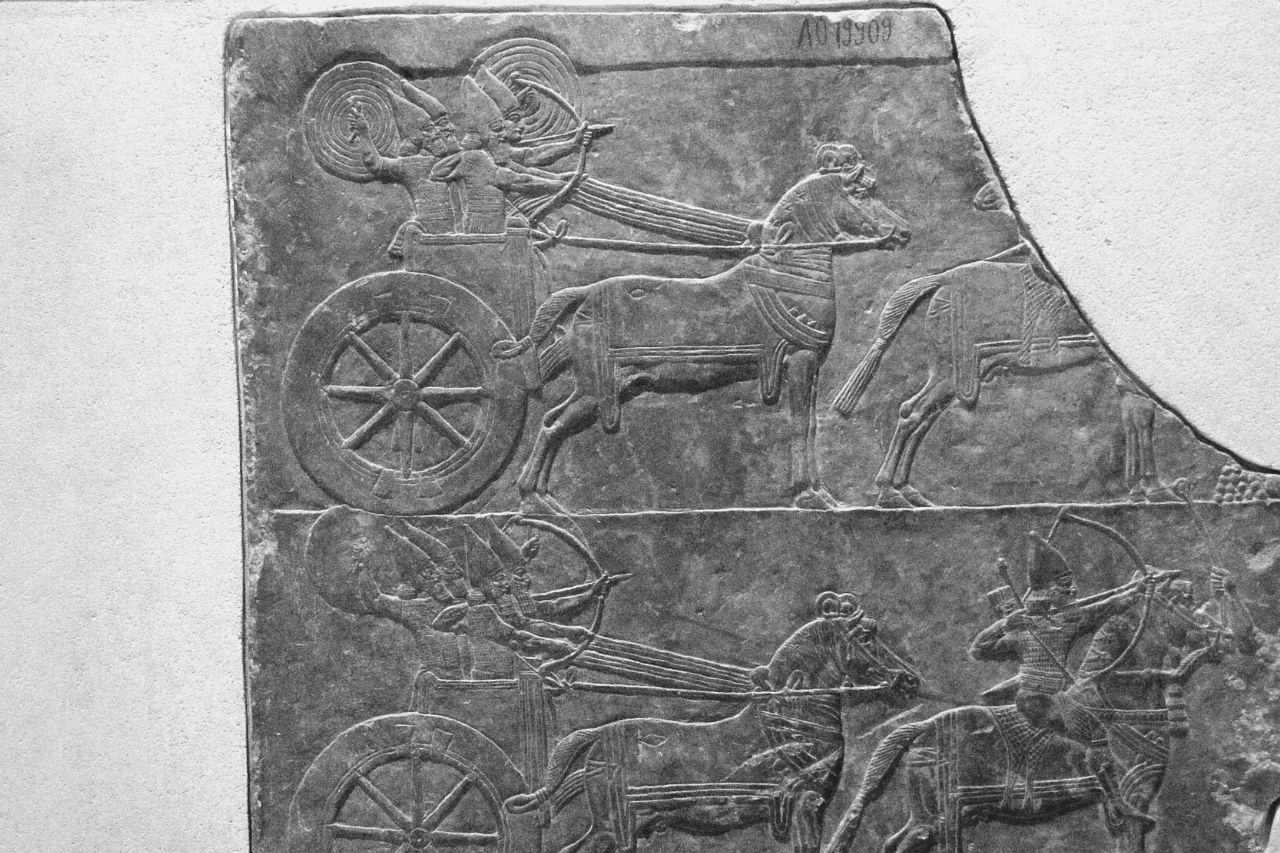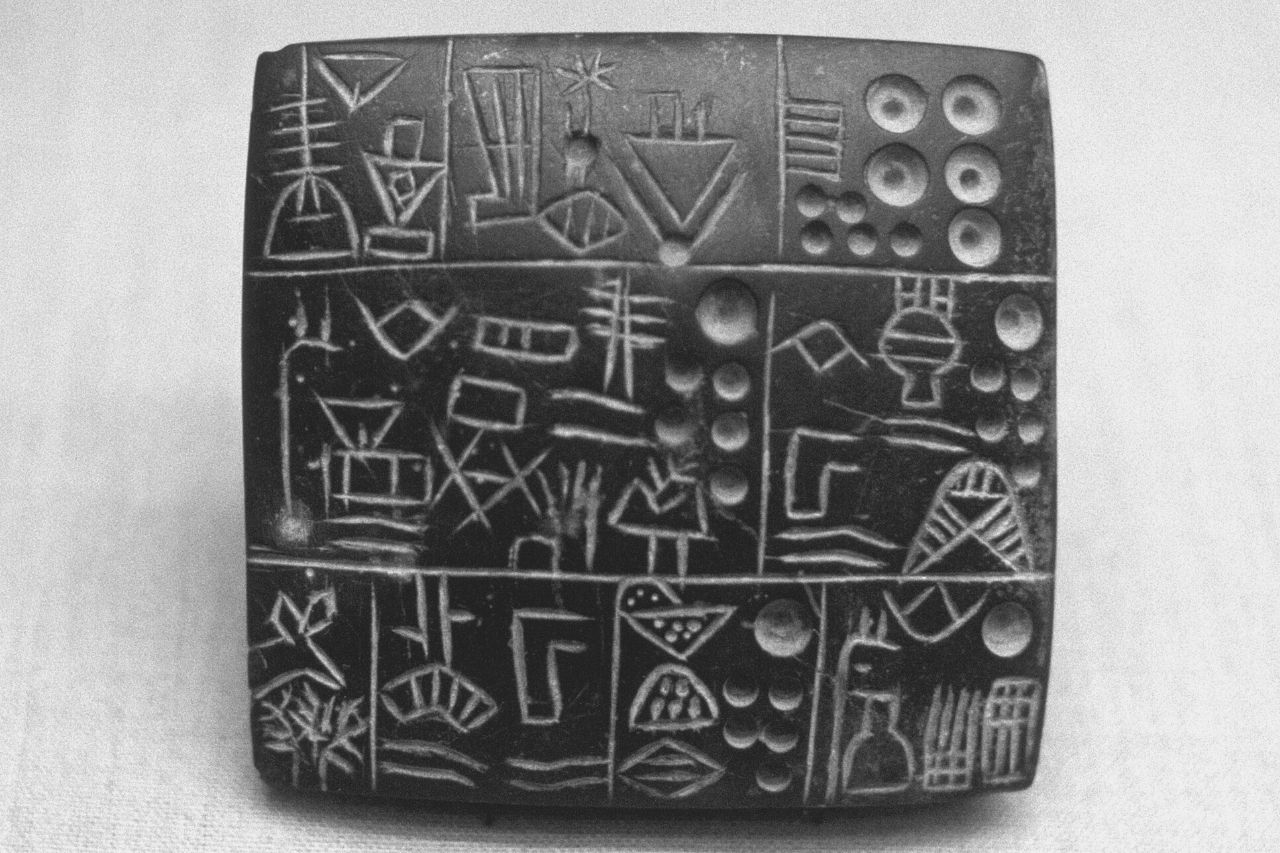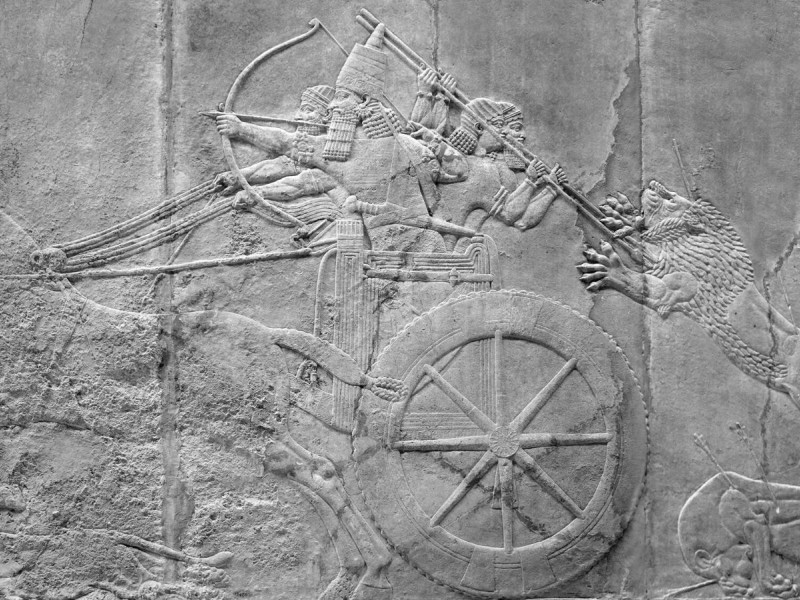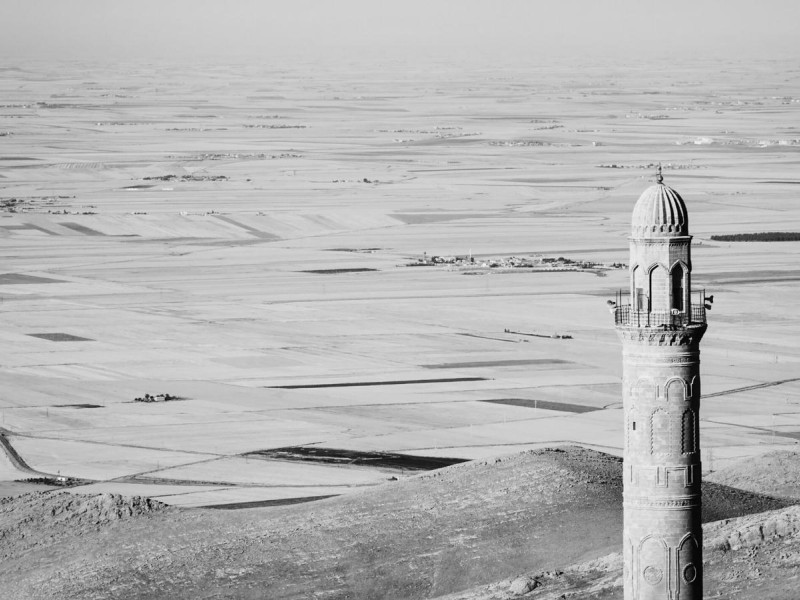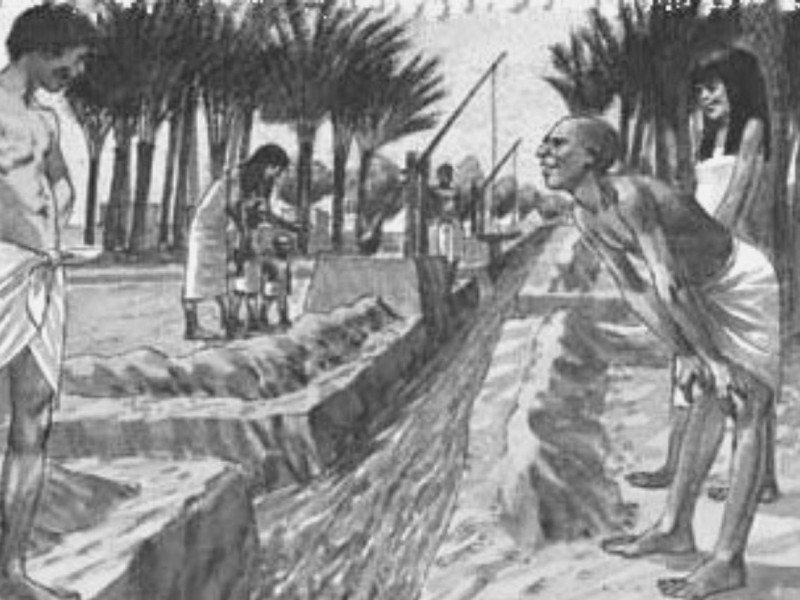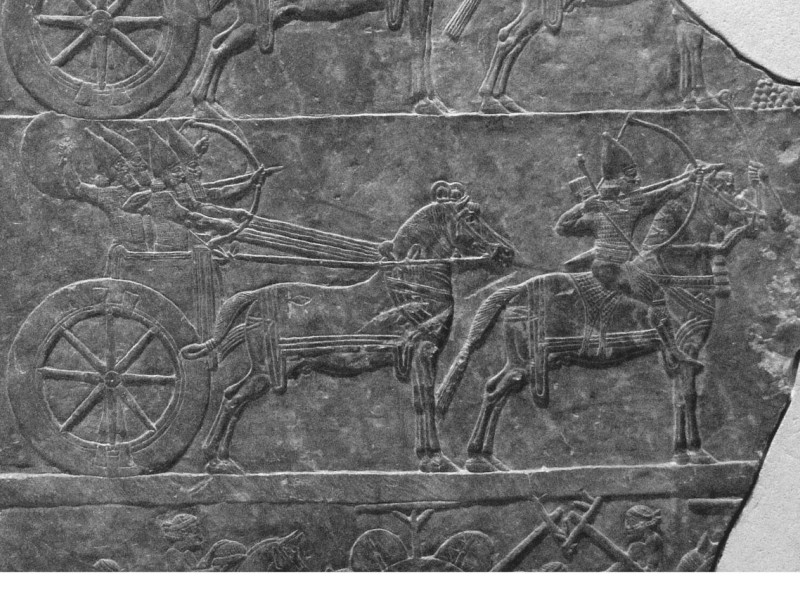Achievements of Mesopotamians: Invention After Invention
You couldn’t be reading this without having a knowledge of what these combinations of letters indicate; for that, you have one of the most outstanding achievements of Mesopotamians to thank, and that’s writing.
You can make the case that writing is the most impactful achievement of Mesopotamia. But it’s not the only one of Mesopotamia’s significant achievements, not by a long shot. This article will cover some of Mesopotamia’s other essential inventions, as well as a more comprehensive look at writing.
Back to Back: Mesopotamia Achievements List
There’s nothing better than a nice list to guide us through a piece of writing. Here is a list of Mesopotamia’s achievements that we’ll be examining in this essay:
The wheel
Chariots
Irrigation
The plow
The sailboat
Writing, specifically using the cuneiform script
Mathematics
Astronomy
To make the article’s structure a little cleaner, we’ll talk about these inventions and developments in terms of their wider categories rather than going through each individual point, for example, grouping irrigation and the plow together since they’re both agricultural innovations.
It doesn’t mean that some items on this list had nothing to do with others; for instance, writing and mathematics were crucial in recordkeeping for crop yields. With that said, let’s begin with our circular, rolling friend: the wheel.
‘Round and ‘Round We Go: Mesopotamia and the Wheel
It’s hard to imagine life without the wheel. Almost every form of manmade transportation over the land we can think of features this now innocuous, seemingly simple contraption. Its most basic form is just a circle with a smaller circle in the center to receive an axle. You don’t even need to add spokes for this to be considered a wheel.
While it’s unknown when or where the wheel was invented, its origin is commonly attributed to ancient Mesopotamia. Some evidence of wheel-like inventions and prototypes exists in other parts of the world (such as the Eurasian Steppe). Still, the earliest definitive sign of the wheel comes from Mesopotamia’s first major civilization, Sumer.
Ancient Sumerians experimented with the multifunctionality of the wheel, and it was used among each of Sumer’s social classes. As early as 4200 B.C., Sumerian potters were relying on the wheel to finesse their craft.
For example, wagons, fitted with four wheels and pulled by animals, made traveling great distances much easier for royalty, soldiers, and merchants; farmers added wheels to their equipment to make their daily toil a little bit less unbearable.
The Sumerians also discovered that the wheel was handy in warfare. The earliest known depiction of wheeled military vehicles appears in the Standard of Ur pictured below, dating to 2500 B.C. However, these aren’t precisely chariots proper but more like wagons.
It’s human nature to improve an invention’s design. In 2,000 B.C., this improvement happened with the wheel, but not in Mesopotamia. Instead, the Sintashta Culture, who lived north of the Caspian Sea, now Russia, came up with the concept of spokes on a wheel. Spokes allowed a wheeled vehicle to be lighter and faster. Soon enough, spoked wheels spread to just about everywhere.
As it turns out, spoked wheels were excellent for waging war. Shortly, chariots were invented after the invention of spokes, and the face of ancient combat changed forever with these technological innovations.
However, it’s unclear where chariots were invented. According to the consensus view, chariots were invented somewhere in the Near East. Regardless of provenance, the militaries of almost every ancient civilization in Mesopotamia, the Levant, Persia, Egypt, Europe, and India used chariots, each with distinct regional and cultural variations.
Agricultural Innovations: Irrigation and the Plow
The wheel revolutionized agricultural labor in Mesopotamia. This section focuses more on how Sumerian farmers developed an irrigation system for their crops and the plow, equally vital for farmers and their work.
To this day, living in a desert environment can be brutal. Even if you set up shop along the banks of a river (or two) that fertilizes its surrounding soil consistently, the desert is demanding.
So, when farmers first arrived in Mesopotamia intending to settle down permanently, they were faced with a simple, albeit all-important, issue: how to get the water from the Tigris and Euphrates rivers to soak their farmland and produce the biggest crop yield.
The earliest farmers were subject to the whims of the rivers. Both flooded annually, with the swollen waters killing crops and livestock, destroying houses, and ruining livelihoods just as much as annual droughts did. Their solution to this problem was irrigation.
This complex solution is achieved by digging canals that diverted water from the river into smaller, more controllable streams that farmers used to encourage plant growth and give access to drinking water for their animals.
Thanks to this development in irrigation, farmers in ancient Mesopotamia grew crops like wheat, barley, legumes, fruits, and vegetables to feed themselves and, eventually, almost everyone else in their local cities. Water, fertile soil, and the sun, which were always abundant in Mesopotamia, are three parts of the equation needed for growing plants.
All they needed is the plant itself, or better yet, the plant in its ungerminated stage, which is the seed. Now, if you’ve ever planted seeds by hand or by shovel, you know how difficult and time-consuming it is, especially in the hot sun. This problem was also true for farmers in Sumer. They, too, wanted to work smarter and not harder, even though the work was still pretty hard.
And thus, sometime during the 6th millennium B.C., the plow was born. It is a tool designed to cut furrows into the soil so that a farmer wouldn’t have to dig individual holes for each cluster of seeds.
Even better was the seeder plow, invented in 1500 B.C. With this latest of Mesopotamia’s significant accomplishments, humans didn’t have to do too much work. Oxen were charged with pulling the plow through the soil while three farmers worked with them: one to lead the animals, one to steer the plow itself, and one to pour seeds through a funnel into the furrows that the plow cut. Modern farm machinery can trace its lineage to ancient Mesopotamia; talk about legacy!
Trading on the Waves: The Mighty Sailboat
With civilization booming and new ones popping up and falling down seemingly overnight, Mesopotamia was interested in expanding its trading relationships with distant kingdoms, countries, and internal city-states.
The wheel had helped Sumerian merchants connect with some of these destinations quicker, but it was time for something even better. The Tigris and Euphrates were there to take as trade routes; all that was needed to conquer them was the sailboat.
Sumerians constructed sailboats out of wood and papyrus, plentiful in the marshes in Southern Mesopotamia, with sails made of heavy pieces of cloth. The boat’s body was originally square (and lacking on the steering front), but it was still a remarkable invention. Here was a means of traversing both rivers and the sea, speeding trade and travel up to unprecedented levels.
Sailboats were applied to other areas, too. Farmers used them to zip through their irrigated farmland. Fishermen quickly discovered their usefulness to their profession. Once the design had been improved, it was used for religious rituals performed for the gods in Sumer, the Akkadian Empire, and Babylon.
The sailboat first appeared about 3,500 years ago in Mesopotamia, and it looks primitive compared to the massive sailing ships of the Age of Sail (1570-1870).
Into the Intellectual Realm: Writing, Mathematics, and Astronomy
Ancient Mesopotamia’s accomplishments in the agricultural sphere (or any sphere, for that matter) are nothing to scoff at. For the first time in the region’s history, Mesopotamian farmers were becoming so productive that crop surpluses were giving settlements too much food that they didn’t know what to do with the excess supply.
In addition, trade was becoming equally fruitful, with numerous natural resources like wood, metals, and gemstones being imported into Sumer. The problem with an economy flourishing is that it gets more complex to deal with, with factors like recordkeeping and distribution to be considered.
Luckily, Mesopotamia also had a natural surplus of wet clay and tough reeds, which weren’t valued as lucrative commodities, per se, but what they were used for would prove to be invaluable for the human experience writ large. One day, an entrepreneurial Sumerian took it upon themselves to keep track of things.
That’s how writing was invented. Although we don’t know how it was precisely created, that was the reason why writing came to life. However, there’s some debate about whether writing emerged first in Mesopotamia or ancient Egypt, as Sumerian cuneiform and Egyptian hieroglyphics appear in the archaeological record simultaneously (c. mid-4th millennium B.C.). But, at any rate, writing was an incredible invention.
The ancient Mesopotamian writing script is known to us as cuneiform, after the Latin word cuneus, which translates to ‘wedge.’ It’s a good name because they used hardened reed styluses to wedge legible symbols into clay tablets. The tablets were then fired and solidified, either in a furnace or under the sun, and Mesopotamia never looked back.
Sumer invented cuneiform writing and wrote in their own language, but every other subsequent civilization followed suit. From the Akkadian Empire to the Neo-Babylonian Empire, the whole area was crazy for cuneiform, though the script evolved over time and with each culture.
The invention of writing allowed for the recording of mathematics as well. Crops, livestock, produce, raw materials, etc., all needed counting, and clay tablets were the best mediums around to do so.
Mesopotamian mathematics gradually grew to tackle more complex issues. For example, logistics for agricultural labor were calculated with math, and the Akkadians invented the abacus to do basic arithmetic. Soon enough, to the bane of future school students everywhere, schools begin to teach math alongside other scribal duties.
It took until the Babylonians for Mesopotamian mathematics to reach their zenith, although they represented a tradition stretching back to the days of Sumer. Assyriologists separate Babylonian mathematics into two chronological periods: Old Babylonian (1830-1531 B.C.) and the Seleucid Period following the partition of Alexander the Great’s empire in the late 1st millennium B.C. These are the eras from which most Mesopotamian mathematical tablets have been discovered, in particular the Old Babylonian Period.
Babylonian mathematics, compared to other mathematical systems from different ancient cultures, is relatively well-known. As such, we’re lucky to have access to so much of their knowledge. For instance, uncovered tablets feature multiplication equations, intricate algebra, advanced geometry, and the Pythagorean Theorem, well before Pythagoras was even a thing!
In fact, a recent discovery dating to 1900-1600 B.C. made by a team of Australian researchers shows that ancient Babylonians were using applied geometry to demarcate land plots for farming purposes even earlier than previously thought!
Mathematics also allowed for more precise observations of celestial bodies, otherwise known as astronomy. This subject can be traced back to the Babylonians as well. The movements of planets were calculated and recorded in great detail, again using clay tablets. It is the first known period to which astronomy based on empirical evidence can be traced. It wasn’t all scientific, though.
Astronomy was used for religious purposes; astronomers and priests looked to the heavens for guidance from the gods and interpreted their motion in terms of omens and other supernatural phenomena.
The most extensive astronomical compilation from Mesopotamia that we possess is collectively known as the Enuma Anu Enlil, dating to the mid-2nd millennium B.C. Its major importance for Assyriologists lies in the sheer amount of astrological and weather omens it contains, which is around 7,000!
There are so many that not all of the text has been deciphered yet. That said, it’s an indispensable resource, if only because it gives insight into how ancient peoples looked at and interpreted the world around them.
Mesopotamian astronomy was highly influential to how later cultures viewed the cosmos. Mathematical calculations discovered by Babylonians were adapted by ancient Greek and Hellenistic (that is, the Greek world in the Mediterranean, including colonies in present-day Turkey, Italy, and North Africa) astronomers in particular, who applied them to their own astronomical models, resulting in a more scientific foundation for their work.
Conclusion
From the wheel to astronomy, the list of the achievements of ancient Mesopotamians goes on and on. However, we’ve only scratched the surface here! In this article, we explored:
Some of Mesopotamia’s major inventions and developments, including the wheel, the chariot, irrigation, the plow, the sailboat, writing, mathematics, and astronomy
The history of these inventions, as well as some of their practical purposes for life in ancient Mesopotamia
The lineage these inventions have left, like their impact on modern life
We take for granted so much of what we have available to us simply because we’ve always had access to it! However, humans haven’t always had everything, and for many of our collective accomplishments, we must look to and thank Mesopotamia.
So, next time you write a note to a friend, use the Pythagorean Theorem, or take to the battlefield in a decked-out chariot, remember: the Mesopotamians did it first!
